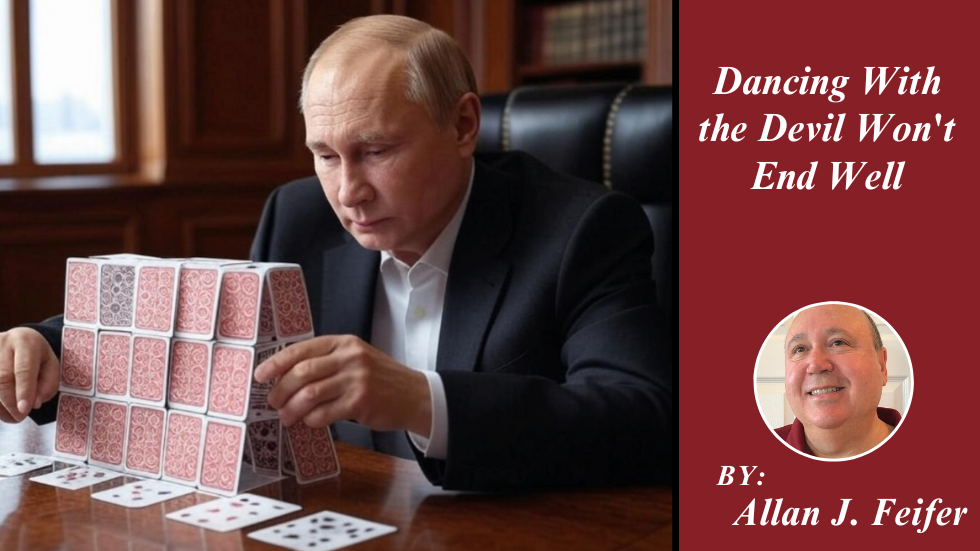We used to be a country of action. We famously said what we meant and meant what we said. Our citizens and enemies did not have to utter mystical nonsense over some dried coffee grounds in the bottom of a cup to understand our positions. Somehow, playing it straight went out of fashion in favor of nuanced thinking and actions. How’s that worked out? Today, we’ll discuss something that makes a lot of sense but isn’t even on the table out of fear of unintended consequences; I think we are there already.
American and other major intelligence services have known for quite some time how precarious Russia’s finances are; Russia’s on the clock and can’t sustain the current tempo underway indefinitely in its war against Ukraine either materially, manpower-wise or economically. Russia’s economy is 17% oil and gas-based, but its exports for oil and gas are 45% and 36%, respectively. Interrupt those exports or lower the price they receive; Russia can no longer sustain its war.
Russia’s oil and gas exports have changed drastically:
Pre-Invasion (2025)
Europe was Russia’s largest customer, importing 55% of Russian gas and 50% of crude oil. Russia exported 4.7 million barrels per day of crude oil. Natural gas exports were 8.9 trillion cubic feet, with most going to Europe.
Post-Invasion (2025)
European imports have plummeted, with the EU cutting Russian gas purchases by over 90%. Russia has redirected exports to China and India, with China now importing six times more Russian oil than it exports to the EU. Seaborne crude oil exports have risen to their highest levels in six months, driven by increased deliveries to Asian markets.
This last item points to Russia’s Achilles Heel, which the West has refused to exploit. Why?
Russia needs $70 a barrel to make ends meet with current pricing at just over $62. However, Russia sells oil at a discount, lowering the price even further; it is unsustainable without drawing down its limited reserves—one additional caveat. Trump’s team is doing everything in its power to lower energy prices. First in support of Trump’s domestic agenda, but just as importantly as our most powerful tool to bring Putin to heel.
Russia relies on a “ghost fleet,” which refers to a network of aging, unregistered oil tankers used to evade international sanctions to continue exporting Russian crude. There are about 12,300 oil tankers in the world. Bloomberg reports that 265 out of Russia’s 435 shadow fleet tankers are now under sanctions, yet still moving 57% of Russia’s seaborne crude shipments in 2024. Key characteristics of this ghost or shadow fleet are:
- Frequent Name & Flag Changes—Ships regularly switch identities to bypass sanctions.
- AIS Signal Manipulation—Many vessels turn off their tracking systems to avoid detection.
- Ship-to-Ship Transfers—Oil is often transferred at sea to obscure its origin.
- Lack of Insurance—Many tankers operate without coverage, increasing environmental risks.
- Sanctions Evasion—The fleet enables Russia to sell oil above price caps imposed by the G7 and EU.
That makes virtually all 435 ships immediately eligible for seizure under international law. We know this, Europe knows this, and Russia knows this. How about a not-so-hypothetical question:
What’s stopping us from taking action against ships carrying sanctioned oil, allowing Putin’s war machine to kill a thousand people a day? Nothing but the will to do so. How long would it be before Russia’s war economy would grind to a halt without markets for its petroleum and natural gas? The answer to that question is interesting. Currently, life in Russia is amazingly normal. Yes, high prices for many consumer items and the unavailability of some things, but in general, ordinary, but only on the surface:
Daily Life:
- Rising Costs—Inflationand interest rates remain high, making -everyday expenses difficult for many Russians.
- Limited Travel—Many Russians can no longer travel to Western countries.
- Social Struggles—Increased alcohol consumption and aggressive behavior due to war-related losses.
Political Climate:
- Increased Repression—The government has cracked down on dissent, making it dangerous to criticize the war.
- Propaganda and Nationalism—Schoolsand media have intensified pro-war messaging, shaping public perception.
- Public Sentiment—Support for the Russian military remains high, with 78%of citizens backing the armed forces, though opinions vary by region.
It is illegal to protest the war in Ukraine. With over one million killed or injured, Russia is finding it increasingly impossible to suppress public perception of the war or the cost in lives:
Military and Government Response:
- Secrecy and Censorship—The Russian government has downplayed casualty figures, restricting independent reporting on military losses and hiding bodiesto prevent the scope of the deaths from becoming obvious.
- Expanded Recruitment—To compensate for losses, Russia has relied on mobilization efforts, inducting individuals in their 50s& 60s, including prisoner recruitment and foreign fighters from North Korea and elsewhere.
- Increased Military Pensions—Families of fallen soldiers receive financial compensation.
Social and Economic Impact:
- Strained Healthcare Systems—Hospitals are overwhelmedwith wounded soldiers, leading to shortages in medical supplies and personnel.
- Psychological Toll—Reports indicate rising alcohol abuse and mental health struggles among veterans and families of the deceased and wounded.
- Public Discontent-While state propaganda maintains support for the war; some regions have seen protests and frustration over the handling of casualties.
Taken together, Russia is ripe for destabilization, politically or economically. While propaganda has kept support for the war high, the relative normality of everyday life has ameliorated much of the discontent you would expect. This could change in an instant should Russians lose faith in Putin. Putin’s Russia is a house of cards. It could only take a single smack to the collective Russian faithful, and opinions could change overnight.
We experienced something quite like that on the day before and the day after Pearl Harbor, where, before the attack, about 80% of Americans opposed direct involvement, but within days, support for war rose to over 90%. What changed was perception, not reality. America would enter the war regardless; Germany and Japan knew that, planned for that, and expected it.
WWII was an example of total commitment. Shouldn’t avoiding another world war demand no less such a commitment from us? Allowing Russia the means to continue a war that could easily suck all of us in is, by definition, against our strategic interests. Where is the bold leadership that denies Russia and its cronies the means to take us over the abyss without doing everything in our power to stop them?
Author, Businessman, Thinker, and Strategist. Read more about Allan, his background, and his ideas to create a better tomorrow at www.1plus1equals2.com. Read additional great writers here.




Recent Comments